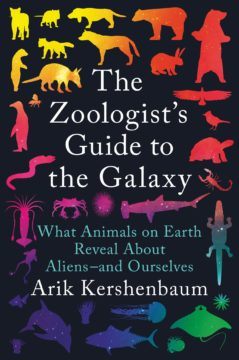Arik Kershenbaum in The New York Times:
 Is anybody else out there? For as long as humans have recognized Earth as but one planet in a vast, orb-speckled universe, we have pondered the mystery of extraterrestrial life. After Nicolaus Copernicus introduced heliocentric theory to 16th century Europe, astronomers began to dream about “other worlds” — and populate them with imaginary creatures. Pioneering astronomers such as Johannes Kepler (father of planetary motion) and William Herschel (discoverer of Uranus) believed in the existence of alien life. Peering through his telescope, Herschel thought he spied towns and forests on the lunar surface. We’re still looking. In 2017, a mysterious object named “Oumuamua” was observed passing through our solar system and some astronomers have made the controversial suggestion that it may be a scout probe sent by an alien civilization. In February, the NASA Mars Perseverance Rover landed on the red planet to search for traces of ancient microbial life.
Is anybody else out there? For as long as humans have recognized Earth as but one planet in a vast, orb-speckled universe, we have pondered the mystery of extraterrestrial life. After Nicolaus Copernicus introduced heliocentric theory to 16th century Europe, astronomers began to dream about “other worlds” — and populate them with imaginary creatures. Pioneering astronomers such as Johannes Kepler (father of planetary motion) and William Herschel (discoverer of Uranus) believed in the existence of alien life. Peering through his telescope, Herschel thought he spied towns and forests on the lunar surface. We’re still looking. In 2017, a mysterious object named “Oumuamua” was observed passing through our solar system and some astronomers have made the controversial suggestion that it may be a scout probe sent by an alien civilization. In February, the NASA Mars Perseverance Rover landed on the red planet to search for traces of ancient microbial life.
The search field is incomprehensibly large: Astronomers estimate that there are more than 100 billion planets in the Milky Way alone — plus exponentially more in the rest of the universe.
What might we find elsewhere?
One zoologist suggests some answers actually may be hiding in plain sight, right here at home. In a provocative new book, “The Zoologist’s Guide to the Galaxy,” Arik Kershenbaum contends that life on Earth provides hints of what we might expect to find on other planets.
Kershenbaum, a scientist at the University of Cambridge, asserts that the “universal laws of biology” that govern life on Earth also apply to aliens. The most important is that species evolve by natural selection, the bedrock idea of evolutionary biology proposed by Charles Darwin. No matter how alien biochemistry might work and no matter how planetary environments might differ, Kershenbaum argues that some version of Darwinian selection would be at work — and would have channelled alien evolution to restricted menus of possibilities.
More here.
